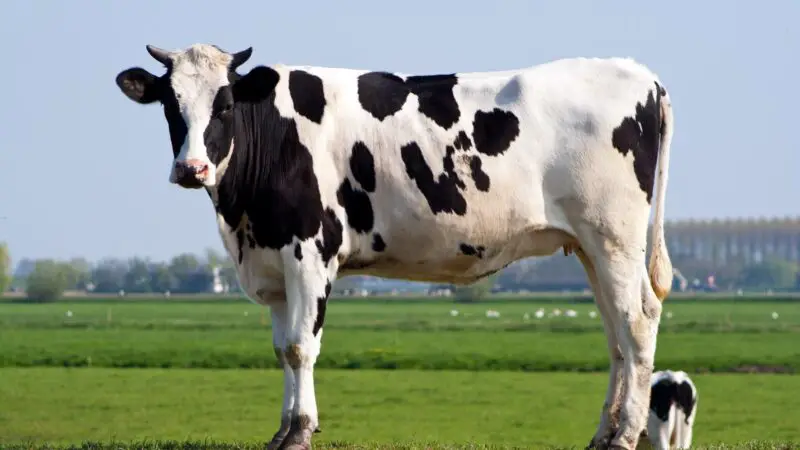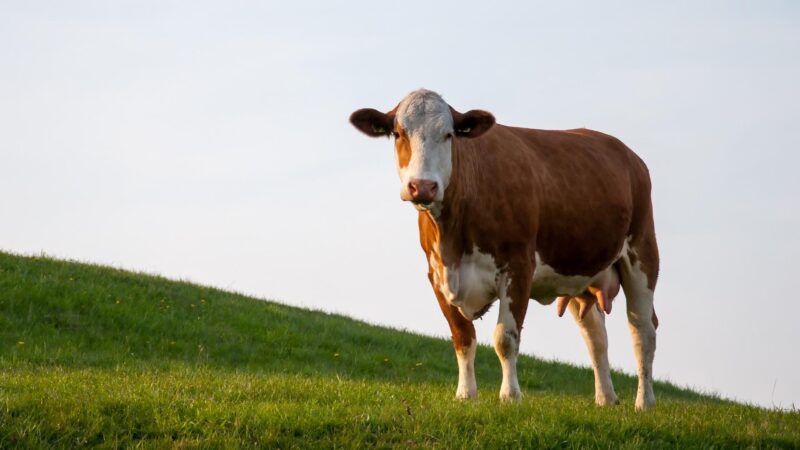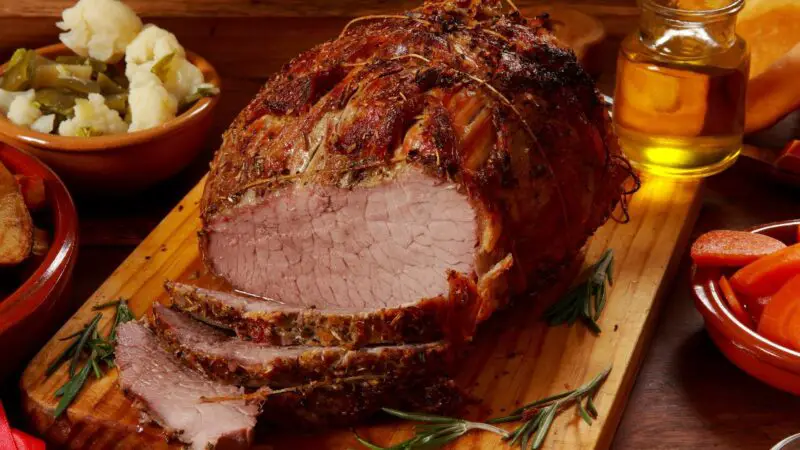Roast beef is a crowd favorite and is also considered a staple in celebratory dinners and parties due to its rich and savory flavor, perfect for pairing with a glass of wine. However, eating too much may pose some health risks.
Roast beef is healthy, but it should be consumed in moderation. While it is a good source of protein and essential nutrients, vitamins, and minerals, it increases the risk of developing cardiovascular diseases and strokes since it has higher amounts of fat, bad cholesterol, and calories.
This article will provide you with everything you need to know about roast beef, the best roast cuts from a cow, what cow breeds it can be cut from, whether roast beef is healthy or otherwise, and answers to interesting questions!
Is Roast Beef Only From a Cow?

Roast beef is only from a cow. It can be found on any section of the cow which includes, but is not limited to, the round, chuck, loins, and ribs. It’s important to note, however, that beef is the meat obtained from cows and “roast” is a way of cooking the beef, hence the term roast beef.
What Cut of Cow Is Roast Beef?
Here are the beef cuts that are best served roasted:
- Round Tip Roast. A wedge-shaped roast cut from a cow’s round, specifically on its thin side, and contains one large muscle mass divided into thirds, no bone, and an outer layer of fat on its edges.
- Round Tip Roast Cap Off. Extricated from the side of the round and is nearly the same as the round tip roast, except it lacks the cap muscle. It is boneless and has one large muscle mass with 3 parts and a fatty outside layer.
- Heel of Round Roast. Similar to the round tip roast cap off but it is extricated from the lower section of the round. It is boneless, wedge-shaped, has an outer fatty layer, and contains several round muscles.
- Round Eye Roast. Contains an oval-shaped eye round muscle with a coarse and grainy texture. It has no bone and is more than 2 inches thick with a fatty layer on the outside.
- Top Round Roast. Cut from the round and is 2 inches thick, has no bone, and contains the top muscle of the round, with some outer fat.
- Bottom Round Roast. Irregular in shape and is cut more than 2 inches thick. It has no bone and contains 1 large bottom muscle found on the round and 1 smaller side muscle. Fat is found on the outer bottom edges.
- Boneless Rump Roast. The rump is extricated from the round, deboned, rolled, and has its muscles tied together. It’s about 2 inches thick and has a thin outer layer of fat on its edges.
- Rib Roast (Large End). Cut from the larger portion of the rib and is more than 2 inches thick. It contains 2 to 3 curved rib bones and a flat blade bone with more than 5 distinct muscles, a rib eye muscle, and fat in between.
- Rib Roast (Small End). A 2-inch thick cut taken from the smaller end of the rib with flatter bones, visible large rib eye muscle, fat between muscles at the tail, and thicker fat outside the ribs.
- Ribeye Roast. Boneless and is more than 2 inches in thickness. It contains the ribeye muscle and small muscles on one side with fat in between.
- Chuck Arm Roast. It may either be boneless or contains the arm bone. It is more than 2 inches thick with 5 distinct muscles and fat between and within the muscles.
- Chuck Blade Roast. A large cut of more than 2 inches in thickness contains three bones: backbone, flat blade bone, and rib bone. It also has more than 5 muscles with fat and connective tissues in between.
- Chuck 7-Bone Roast. Extricated from the center of the blade of the chuck and is more than 2 inches in thickness. It contains a flat, 7-shaped bone, a rib bone, and a backbone. It also has more than 5 distinct muscles and fat in between.
- Cross Rib Pot roast. Despite its name, this cut is found on the lower part of the beef chuck. It’s a square-shaped beef with 2 or 3 ribs found on its underside and large amounts of fat between muscles.
- Tri-tip Roast. A lean, tender, and triangular-shaped cut from the bottom part of the sirloin is either sold as a steak cut into pieces or as a small roast.
- Loin Tenderloin Roast. Tender and lean roast cut from the tenderloin muscle with little fat and fine texture. It contains no bones and may appear tapered from both ends.
What Part of the Cow Is Roast Beef?

The best roast beef cuts can be found in the round, chuck, loin, and ribs. Other parts such as the brisket, shank, flank, and plate can also be used as roast beef. However, they’re usually cut into and sold as steaks.
What Is the Difference Between Beef and Roast Beef?
Beef is simply the meat obtained from a cow or beef cattle, while roast beef is beef that is cooked using a roasting method (usually oven-roasted).
Is Roast Beef Considered Steak?

Roast beef is not considered a steak. Roast beef is a larger and thicker cut of meat intended for roasting as a whole, usually in an oven. On the other hand, steaks are tender sliced cuts of meat that can either be thick or thin and are meant to be grilled or cooked at high temperatures quickly.
What Type of Cow Does Roast Beef Come From?
Roast beef can be cut and extricated from any cow breed. However, there are 7 breeds that are most commonly used in the United States:
- Angus. Considered the most well-known and esteemed beef cattle breed. They’re a solid black color and have no horns on their heads.
- Hereford. Their meat has an exquisite tenderness, and most cow breeders like them for their quick maturation rate, which is useful for commercial production.
- Braham. Stable and adaptable breeds due to having experienced generations of disease and malnutrition. They’re generally light-colored and have a distinctive spinal hump and large floppy ears.
- Holstein. Originally dairy cattle but are now used for beef production, these cows are an old breed and are known for their white coat with black patches.
- Gelbvieh. The calves of this breed are known for their muscle growth and are therefore used for beef, while females are known for their high milk production as well as fertility.
- Limousin. Easily confused with the Angus breed since they’re generally black-coated, this breed is highly adaptable in cold climates and has fast feed conversion rates.
- Simmental. Although they’re not solely raised for beef production, this breed is known for its productivity.
Related: Buying Beef Cattle | A Detailed Guide
Can You Roast a Cow Whole?

You can roast a cow whole, even if it’s a tiring task. Roasting an entire cow or beef cattle is done anywhere in the United States, such as these chefs from Texas who had to build a contraption that could cook the 900-pound steer.
Frequently Asked Questions
Which Is Healthier Chicken or Roast Beef?
Chicken is the healthier option since it’s also an excellent but healthier source of protein has considerably fewer fats, and is low in cholesterol. Nutritional diets are usually composed of swapping red meat with white meat, such as chicken and turkey as well as seafood.
According to a dietitian, beef should be consumed in moderation as it has high levels of saturated fat, which increases the risk of cardiovascular diseases. When choosing beef, consumers must aim for leaner cuts and avoid cold cuts.
Roast beef is also a valuable source of protein, Vitamin B12, and iron. However, it has a high amount of bad cholesterol and calories. It also increases the risk of developing strokes and heart attacks.
What Is the Best Cut of Beef?
There is no consensus on the best beef cut since it differs based on preferences, and how the cut was trimmed, graded, and marbled. However, prime rib beef cuts are considered high quality with their juicy and tender texture. It refers to sliced parts of a beef rib or ribeye roast that comes from the cow’s rib primal section, specifically consisting of the 6th rib through the 12th.
What Is Another Name for Roast Beef?
Roast beef is also referred to as beef cut, beef roast, beef joint, pot roast, and roast joint.
Roast beef is cut from a cow and can be extricated from nearly all of its parts, but the best sections are from the round, loin, chuck, and ribs. It is a considerable source of protein, iron, and Vitamin B12. However, over-consumption can lead to heart disease and stroke.
List of Sources
How a Dietitian Shops for Meat
Home Slaughtering and Processing of Beef
